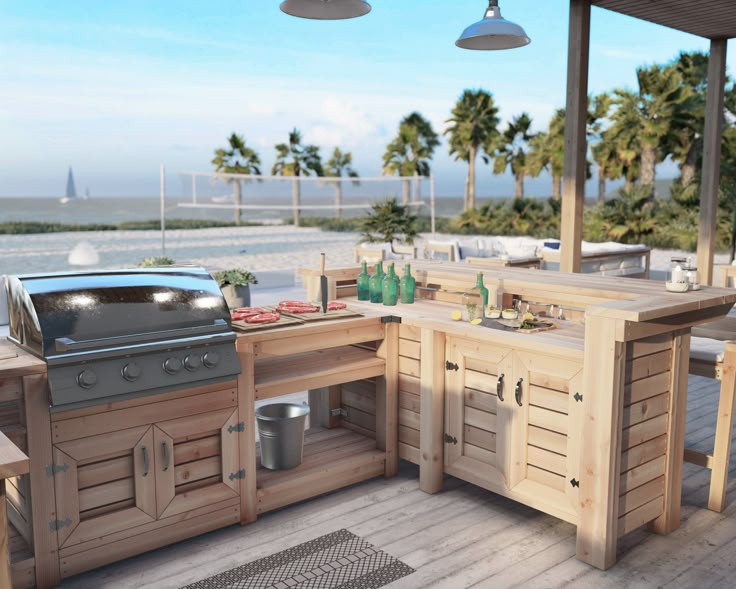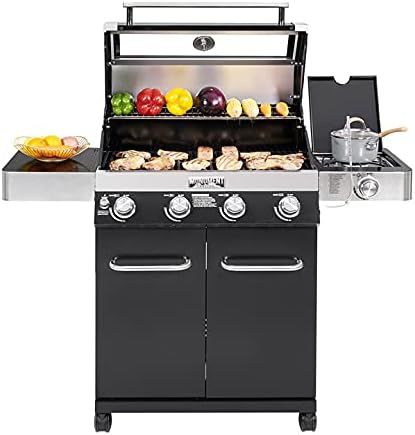
A gas grill that smokes too much or heats unevenly can ruin your barbecue fun. Many users once used lava rocks, but modern grills moved on to something better.
Flavorizer bars replace lava rocks in gas grills because they distribute heat evenly, reduce flare-ups, last longer, and are easier to clean. They also improve food flavor without health risks.
If you want to know why grills changed and how flavorizer bars work better, keep reading. You will also learn if ceramic briquettes or other options could still be useful.
What were lava rocks used for in gas grills?
Many people once believed lava rocks gave gas grills the best results. They seemed like a cheap and simple way to mimic charcoal grilling.
Lava rocks in gas grills stored heat, absorbed grease, reduced flare-ups, and gave smoky flavor. They were used under the grates to create heat and protect burners.

How lava rocks worked
Lava rocks came from volcanic material. They are porous, which means they hold heat and release it slowly. Placing them above burners allowed them to radiate heat across the cooking surface. As fat dripped onto them, smoke rose back to the food. This gave the illusion of charcoal grilling.
Pros and cons
At first, people liked lava rocks because they were cheap, reusable, and easy to find. But the porous surface also trapped grease and bacteria. Over time, this created too much smoke, bad odors, and health risks. Cleaning required boiling them or replacing them often. Many owners skipped this step, leading to problems.
Why did manufacturers stop using lava rocks?
Grill makers wanted safer, cleaner, and more reliable systems. Lava rocks no longer fit modern cooking needs.
Manufacturers stopped using lava rocks because they caused smoke buildup, required constant cleaning, carried food safety risks, and failed to protect burners effectively.

Industry changes
Big box stores pushed for cheaper, mass-produced grills. Shipping sheet metal parts was simpler and more consistent than supplying lava rocks and special grates. Companies promoted burner covers and metal shields as the “new standard.”
Why consumers accepted the switch
Advertising highlighted these new metal plates as cleaner and easier. Many buyers preferred less maintenance and faster cooking, even if it meant losing some smoky flavor. In reality, lava rocks were better for flavor but worse for health and upkeep.
Do flavorizer bars provide better heat distribution?
Uneven cooking frustrates anyone using a grill. Cold spots waste time and can ruin food.
Flavorizer bars distribute heat more evenly than lava rocks by covering burners fully, shielding them from grease, and radiating consistent heat across the grill surface.
Why heat distribution matters
Good grilling means even temperature across the surface. Lava rocks created hot and cold spots because of their uneven size and placement. Flavorizer bars, usually made from stainless steel, form a uniform layer. They heat evenly and reduce flare-ups caused by dripping grease.
Technical advantage
The angled design of flavorizer bars channels grease into a tray. When small amounts of juice hit the hot surface, it vaporizes, adding flavor. Unlike lava rocks, the bars don’t trap old grease. This reduces cleaning needs while still giving a smoky touch.
How do flavorizer bars reduce flare-ups?
Flare-ups happen when grease hits open flame. They can burn food and make grilling unsafe.
Flavorizer bars reduce flare-ups by catching grease before it hits the burners, vaporizing some drippings, and directing the rest to a drip pan safely.

The science behind flare-up control
Because flavorizer bars are solid and cover the burners, grease cannot drip directly onto flames. Instead, it hits the hot metal, creating smoke but not large fires. Excess grease flows away into a grease pan. This not only improves cooking safety but also extends burner life.
Real-world benefits
Users notice fewer sudden bursts of flame and more control over temperature. This makes it easier to cook delicate food like fish or vegetables without burning them. It also keeps the grill interior cleaner, lowering long-term maintenance.
Are flavorizer bars easier to clean than lava rocks?
Cleaning is one of the biggest complaints about grilling. If parts are hard to clean, users stop doing it.
Flavorizer bars are easier to clean than lava rocks because they are solid, nonporous, removable, and can be burned clean by heating the grill on high.
Comparison in cleaning effort
| Feature | Lava Rocks | Flavorizer Bars |
|---|---|---|
| Grease absorption | Yes (porous) | No (solid metal) |
| Cleaning method | Boil, scrub, replace | Burn off, brush, rinse |
| Replacement frequency | Every few months | Every few years |
| Risk of food poisoning | High | Very low |
Why it matters
Owners want to enjoy cooking, not spend hours cleaning. Lava rocks demanded constant boiling and drying. Flavorizer bars can be flipped, brushed, or even self-cleaned by preheating. This simple care extends their lifespan and lowers cost over time.
Do flavorizer bars improve grill flavor like lava rocks?
One of the biggest reasons people loved lava rocks was flavor. Charcoal-like smokiness was part of the fun.
Flavorizer bars improve grill flavor by vaporizing food drippings into smoke, creating a smoky taste similar to charcoal but without the mess of lava rocks.
How smoke flavor is created
When fat and juices hit a hot surface, they vaporize into smoke that rises back into the food. Lava rocks achieved this but often produced bitter, heavy smoke. Flavorizer bars allow controlled vaporization. The result is balanced flavor without excess soot.
Added benefit
Flavorizer bars also prevent burnt grease buildup. This means the smoke flavor is fresher and not mixed with old residue. For most users, the taste difference is very close to charcoal but much cleaner.
Conclusion
Flavorizer bars replace lava rocks because they give safer, cleaner, and better grilling results.
FAQs
Do flavorizer bars need to be replaced often?
Most bars last several years if maintained. Stainless steel models last longer than porcelain-coated ones.
Can I add lava rocks to a grill with flavorizer bars?
It is not recommended because modern grills are not designed for lava rocks. It can block burners and cause damage.
Do flavorizer bars fit all grill models?
They come in many sizes. Check your grill’s manual or measure before buying replacement bars.
Are flavorizer bars better than ceramic briquettes?
Both work well. Flavorizer bars are easier to clean, while ceramic briquettes hold heat longer.
Can flavorizer bars be cleaned in a dishwasher?
It is possible, but most experts suggest brushing or burning off debris inside the grill instead.
Do flavorizer bars add smoke flavor like wood chips?
They add some flavor, but wood chips create a stronger smoke taste if placed in a smoker box.
How do I know when to replace flavorizer bars?
Replace them when they are rusted through, warped, or no longer cover burners properly.

